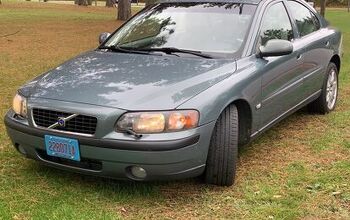The 2018 E-Pace Drinks More Than Its Bigger Brother

Just to clear things up right off the bat, Jaguar’s newest model, the E-Pace, is not the brand’s upcoming electric sport crossover. That’s the I-Pace. Because “I” stands for … ions, we presume.
No, the E-pace is the smaller answer to Jag customers looking for something less than an F-Pace, but not too much less. Riding on the Range Rover Evoque platform, the E-Pace boasts less overhang and a shorter overall length, while retaining the styling cues and handling of its popular larger sibling. However, despite being smaller in most dimensions, there’s one area where it actually tops the F-Pace: in consumption of fuel.
The Environmental Protection Agency has released fuel economy ratings for one of the 2018 E-Pace’s two configurations — this one the higher output 2.0-liter turbocharged four-cylinder seen on higher-trim models. It’s good for 296 horsepower and 295 lb-ft of torque sent to all four wheels.
The combined rating bestowed on the hotter E-Pace is 23 miles per gallon. In the city, this E-Pace can expect to return 21 mpg, and 27 mpg on the highway.
However, buyers of a 2018 F-Pace equipped with the same engine can expect 24 mpg combined, helped along by a higher city rating of 22 mpg. Highway mileage is the same. Smaller to the eye doesn’t necessarily mean thriftier at the pumps — we saw this recently with the Nissan Rogue’s little brother, the Rogue Sport (Qashqai in Canada).
On the surface, the E-Pace’s ZF nine-speed automatic transmission, coupled by its smaller size, would seem to give it an advantage. However, the E-Pace, when equipped with the 296 hp engine, actually outweighs the F-Pace by 130 pounds. Its transmission also has a higher final drive ratio than its eight-speed sibling.
Still, a single MPG isn’t likely to muss anyone’s hair, as the E-Pace’s main job is to provide a lower entry point to Jag’s utility lineup. For $39,595 after delivery, the new SUV’s base MSRP is meaningfully lower than the $43,060 F-Pace. Base models of both vehicles make do with a 2.0-liter making 246 hp in the E-Pace, 247 hp in the F-Pace, and 269 lb-ft in both.
[Image: Jaguar Land Rover]

More by Steph Willems
Latest Car Reviews
Read moreLatest Product Reviews
Read moreRecent Comments
- Brian Uchida Laguna Seca, corkscrew, (drying track off in rental car prior to Superbike test session), at speed - turn 9 big Willow Springs racing a motorcycle,- at greater speed (but riding shotgun) - The Carrousel at Sears Point in a 1981 PA9 Osella 2 litre FIA racer with Eddie Lawson at the wheel! (apologies for not being brief!)
- Mister It wasn't helped any by the horrible fuel economy for what it was... something like 22mpg city, iirc.
- Lorenzo I shop for all-season tires that have good wet and dry pavement grip and use them year-round. Nothing works on black ice, and I stopped driving in snow long ago - I'll wait until the streets and highways are plowed, when all-seasons are good enough. After all, I don't live in Canada or deep in the snow zone.
- FormerFF I’m in Atlanta. The summers go on in April and come off in October. I have a Cayman that stays on summer tires year round and gets driven on winter days when the temperature gets above 45 F and it’s dry, which is usually at least once a week.
- Kwik_Shift_Pro4X I've never driven anything that would justify having summer tires.


































Comments
Join the conversation
I-Pace, E-Pace, sounds confusing. What about P-Face? Now there's a badge you won't forget lightly. ;-)
This thing wont sell well, maybe even worse than the e-pace; its too expensive, too badly proportioned and does not have good engine options...